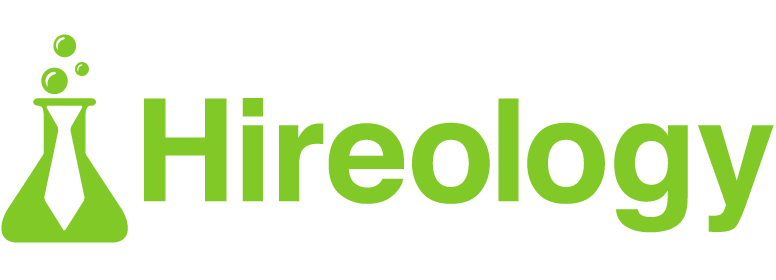The Bureau of Labor Statistics July Employment Situation showed encouraging job growth, reporting an addition of 943,000 jobs and a tick down in unemployment to 5.4% from 5.9%. This increase is the most we’ve seen since August of 2020, and an increase from what economists expected from the month. Additionally, revisions to the May and June reports were adjusted to include 119,000 additional jobs that weren’t accounted for, bringing the total number of recovered jobs to 16,7 million, or 74% of the 22.4 million jobs lost since March of 2020.
The majority of job gains occurred in leisure and hospitality with 380,000 jobs added — a great sign for continued economic resurgence. Local government, professional & business services, transportation & warehousing, and healthcare saw notable gains as well.
Hireology customers also saw a promising month, with nearly 12,000 hires made and 23,000 new positions opened. And the average time to hire among our customers decreased by one full day month over month to 22 days, meaning Hireology users are reviewing applicants, hosting interviews, and extending offer letters in roughly three short weeks.
While the hiring crisis is still affecting many employers across every industry, it does seem to be easing up. Several factors are contributing to this: half of the U.S. population is now fully vaccinated, meaning folks are more comfortable returning to in-person work settings. Additionally, many companies have chosen to increase wages or improve working conditions to meet the evolving needs of today’s job seekers.
So how can you capitalize on the economic rebound? Of course, the answer to getting people back to work is nuanced and there isn’t one right way to attract talent as we recover. But one thing is true — you can’t rely on the same recruiting tactics you’ve always used.
Job seeker expectations have changed and you need to evolve alongside them. Here are some changes you can make to your recruiting and hiring efforts right now. And listen to Adam Robinson, Hireology’s CEO, give a quick recap of the jobs report in this video.
Cast a Wider Net
You should be using as many channels to get the word out about your opportunities as possible. Post your open roles on your social media channels, encourage employees to refer their friends and peers, and make sure your job postings are SEO optimized to get even more eyes from Google searches.
And when it comes to what to include in your postings, requirements like a Bachelor’s degree may seem like an easy way to weed out candidates that aren’t the right fit, but you may be missing out on a large portion of people that have all the necessary skills to do the job well.
Some of the top company founders including Mark Zuckerberg, Steve Jobs, and Michael Dell didn’t earn a Bachelor’s degree, and companies like Apple and Google, have stopped requiring Bachelor’s degrees for their open positions. While you don’t have to get rid of the requirement altogether, you can request either a Bachelor’s degree or equivalent experience to still ensure you’re attracting those that are capable of doing the role.
Reinforce Safe Working Conditions
The delta variant is causing another surge in COVID cases, and many employees are hesitant to get back to work when their health is still at risk. Make sure you’re discussing your safety precautions publicly so that applicants and employees know that their health and wellness is a priority to you. Whether you’re bringing back mask mandates, requiring proof of vaccination, or reducing capacity and encouraging social distancing, let your potential employees know on your career site.
Promote Your Perks
With so many companies opting to increase pay or offer better benefits, the competition is getting fierce. You’ve likely heard both sides of the story — many employers are struggling to find employees while some are having great success hiring for their open roles. The last few months of jobs reports have shown us that people do want to work, they just want to work in good roles at good companies. So you need to make it known to your potential applicants that that’s what you’re offering.
Share out the perks your company offers, including 401K matches, education stipends, paid time off, or paid sick days. Use your career site and each individual job posting to highlight these perks so that everyone that visits your site not only knows what product or service you offer, but also that you’re a great employer.
Showcase Career Paths
Benefits on their own are a great way to initially attract candidates, but if a job seeker doesn’t see your organization as a fit long-term, you’ll lose out on a great deal of applicants.
Expand on your employees’ ability to grow their careers with your organization on your career site. Interview your employees that have been with you for years and use their testimonials to showcase that your organization prioritizes employee growth. Show that your place of work is not a means to an end, but a place that job seekers can grow and develop.
Make The Process Easy
With so many job options available, job seekers will pass on applying to your open roles if you require lengthy applications with redundant form fields. Make your applications short, sweet, and mobile-friendly to get as many submissions as possible, and use automated candidate screening to ensure your applicants are quality and give you peace of mind. That way, you’re not bogging down your HR team with reviewing candidates that aren’t right for the role.
Additionally, keep your candidates engaged throughout the process so that you keep talent interested. With so many options available to job seekers, the candidate experience matters more than ever, so send texts or emails following each interview to remind candidates you’re interested and see how the process is going.
And lastly, onboarding and retention should be a consideration before you’ve even extended an offer. Enlist tools that help keep your team around long-term, like a digital onboarding platform and payroll that ensures your employees are paid on time, every time. Hireology offers an all-in-one platform that can transform your hiring and retention efforts, all from one system.
We aren’t out of the woods yet, and we still don’t know what the future of the delta variant holds for our economy and wellbeing, but the last few months of job reports have shown that we are trending in the right direction. So it’s important to prioritize getting your hiring process set up for success. If you’re looking for assistance with building your best team, let’s talk.




